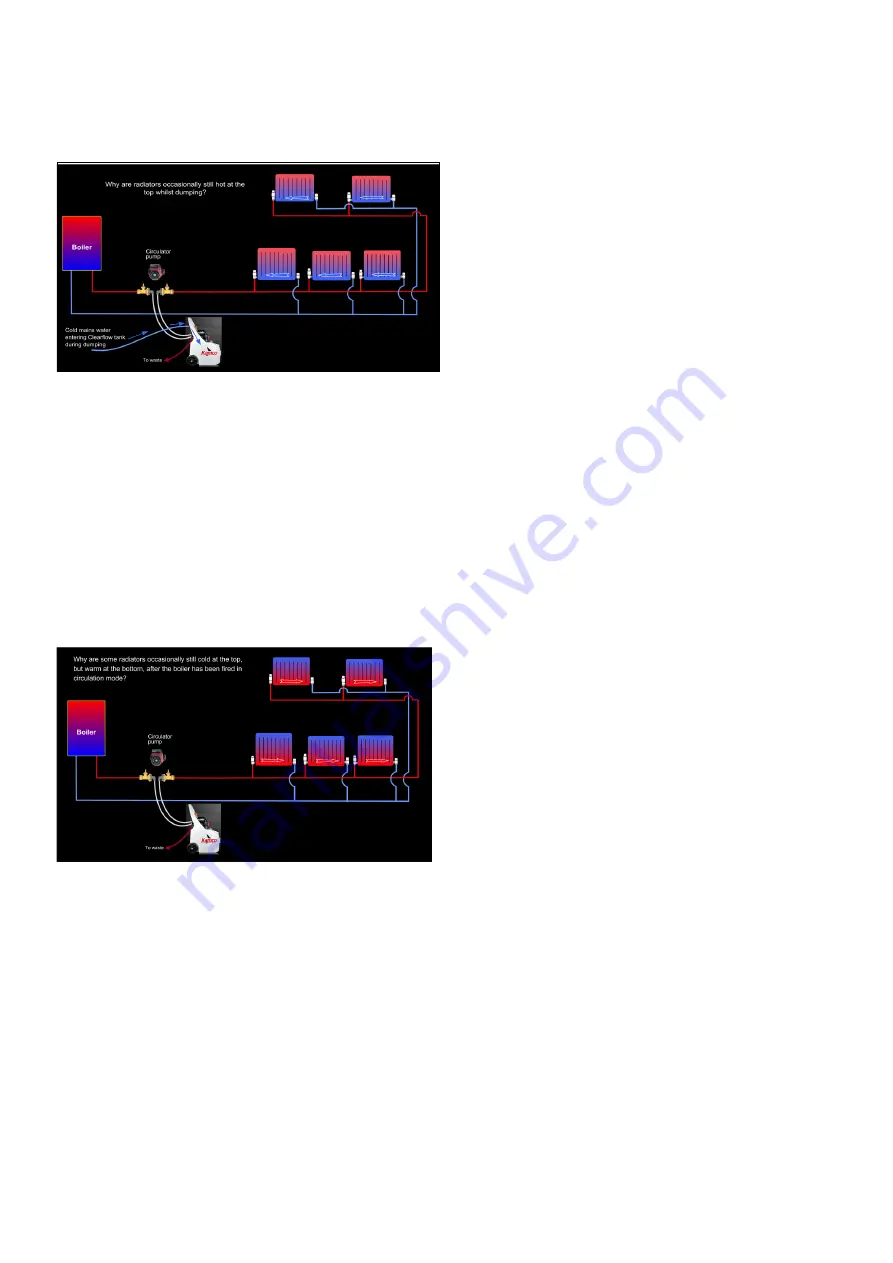
Eventually the warmer water will be swept from the
radiator, but you can speed it up by introducing some air
into the top, of the radiator to force the water level down,
using a Kamco Systemsure injector.
Q. On some systems, after I have fired the boiler to heat
the system once I have added the flushing chemical, I
notice that the radiators are hot at the bottom, but still
cold at the top. Why?
A. The reason is the same as for the previous question.
A Clearflow pump circulates the water through a system
much faster than the standard system pump, and the
heated water is speeding across the base of the radiator
rather than circulating throughout the whole radiator.
Given time the heat will spread up the radiator, but try
reversing the flow a few times to speed up the process.
Cutting corners?
Q. Is it necessary to bleed radiators after a power flush?
A. Yes. However, the amount of air in the radiators is
usually small. If you keep the water level in the Clearflow
tank at least 15 cm (6”) above the minimum, you’ll
minimise the air to be bled from radiators.
Q. Is it really necessary to carry out the individual
radiator flushing procedure?
A. Yes. You can prove it for yourself by flushing a system
without putting the full flow through each radiator in
turn, and then dumping until the waste water is clear.
Now put the full flow through each radiator in turn, and
watch the water discolour again as more debris is brought
into suspension.
Q. Do I need to carry out a separate dumping procedure
on each radiator?
A. Yes, but don’t do so immediately after adding the
flushing chemical. If you do, you’ll be dumping your
flushing chemical straight down the drain, and will have
to keep adding more as you work your way around the
house.
Whilst we think that this is an excellent idea from a
chemical suppliers’ point of view, it isn’t generally
necessary, as loosened debris takes many hours to settle
or compact, and will have been purged from the system
long before this could happen.
Put the full flow, with chemical treatment, through
each individual radiator in turn. Only then, commence
dumping, working your way round the house, ensuring
the full flow through each radiator individually as you
dump, by closing off all other radiators.
Operational problems
Q. What do I do if the mains water supply is very poor,
and can’t replenish the CLEARFLOW tank fast enough
whilst dumping? Should I part close the dump valve?
A. Don’t partially close the dump valve if the water level
in the tank keeps falling. Wait until the water level is
about 12 cm from the bottom, close the dump valve and
re-open the isolating valve on that side (i.e. re-establish
circulation through the system).
However, leave the water inlet tap OPEN, and allow the
tank to fill until the level is close to maximum.
As soon as the water level reaches maximum, again switch
into dumping mode, until the water level falls to 12 cm
from the bottom, and then repeat the exercise until dump
water finally runs clear.
This method ensures that the water is always moving
vigorously throughout the system, ensuring that debris is
kept moving, in suspension.
Q. What can I do if I am working on a radiator with such
a severe build-up of corrosion debris that I am struggling
to clear it all?
A. Difficult radiators such as this will often respond to
use of the Radhammer vibrator device, also supplied by
Page 14




































